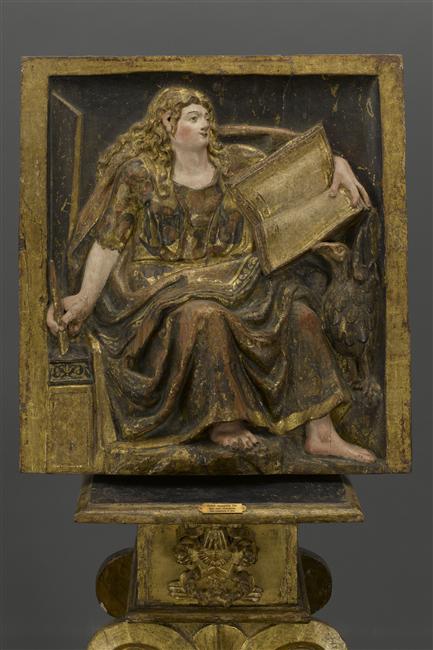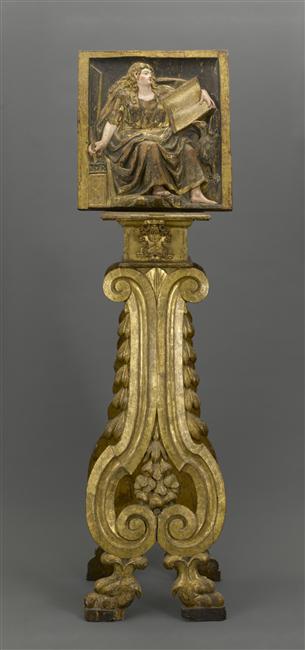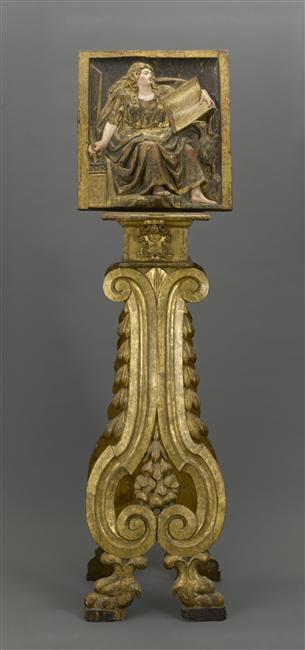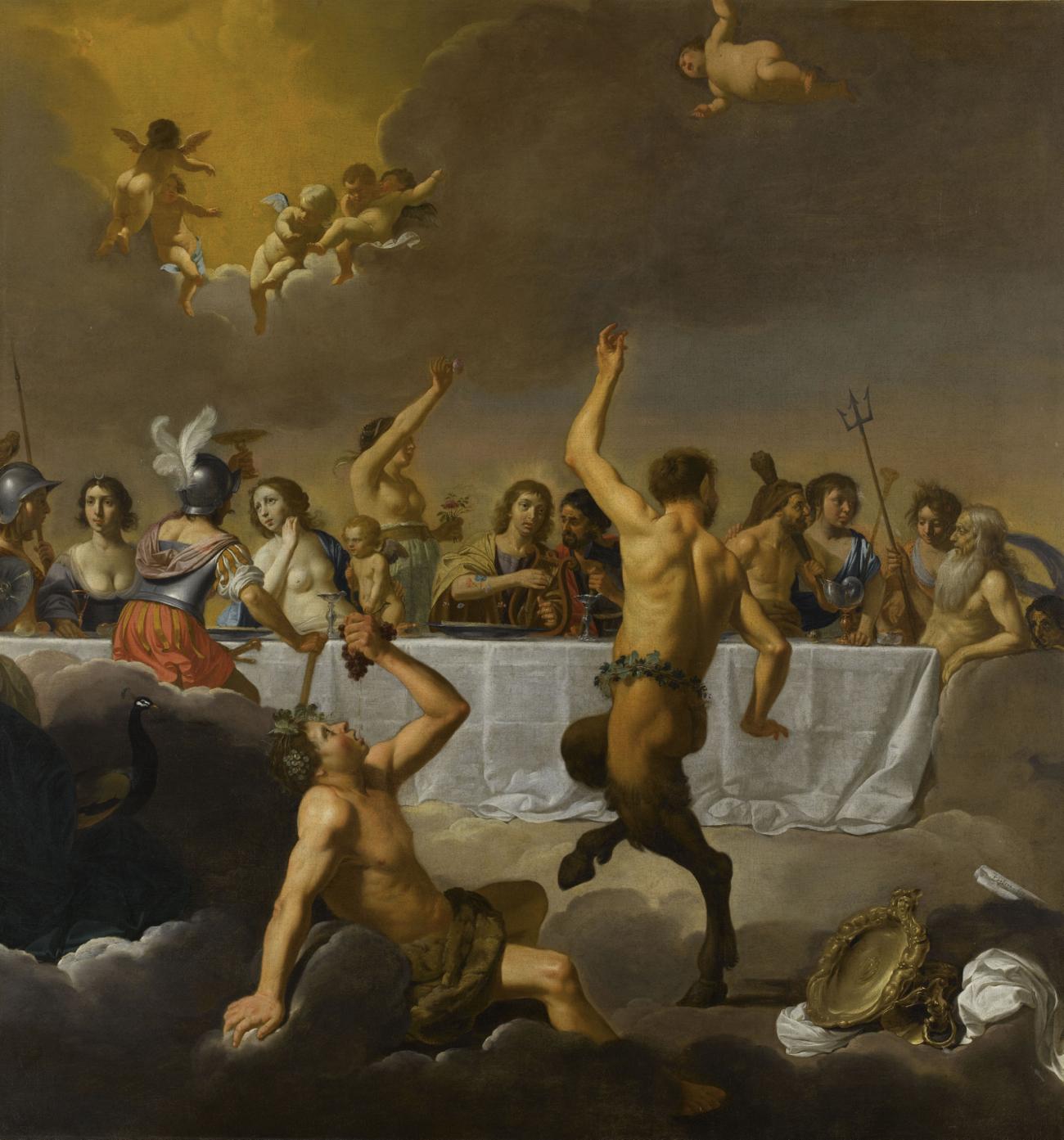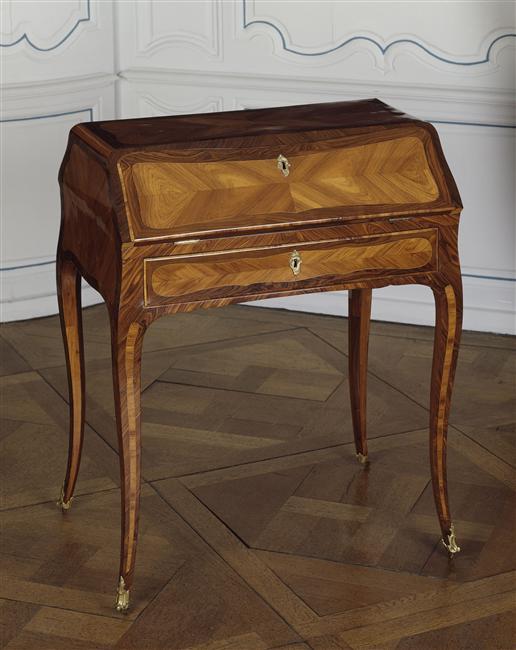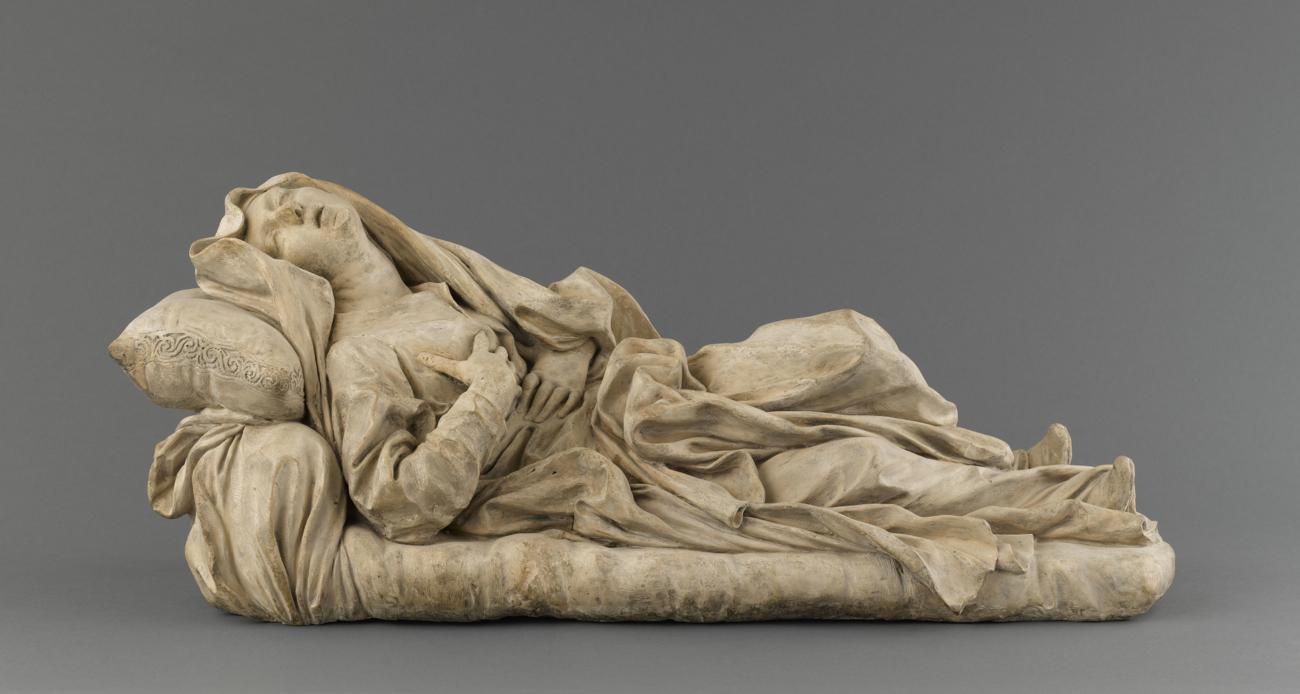
Sculptures
Saint John the Evangelist
This relief from the 16th century Spanish school, representing Saint John the Evangelist, is set on a gilded wooden lectern, produced in 18th century France.
According to the usual iconography, Saint John, author of one of the Gospels and the Apocalypse, is accompanied by his attribute: the eagle. John was the youngest of the twelve apostles, which is why he is frequently portrayed with a chubby face and no beard.
This full-length subject takes up the whole space. On one side is the inkwell, into which Saint John dips his pen, and on the other, the eagle that supports the holy book with its head.
We can assume that this work was originally one of a series of reliefs representing the four Evangelists, adorning the lower part of a large Spanish altarpiece.
The polychromy of the work is typical of the Spanish sculptures of the Renaissance and the Baroque period. The technique of sgraffito – scratching the almost dry paint with a stylus to expose the gold layer beneath - was also used in the Netherlands and Germany to render fabrics, as with Saint John’s cloak here, but this process had been typical of Hispanic art from the 1520s on.

